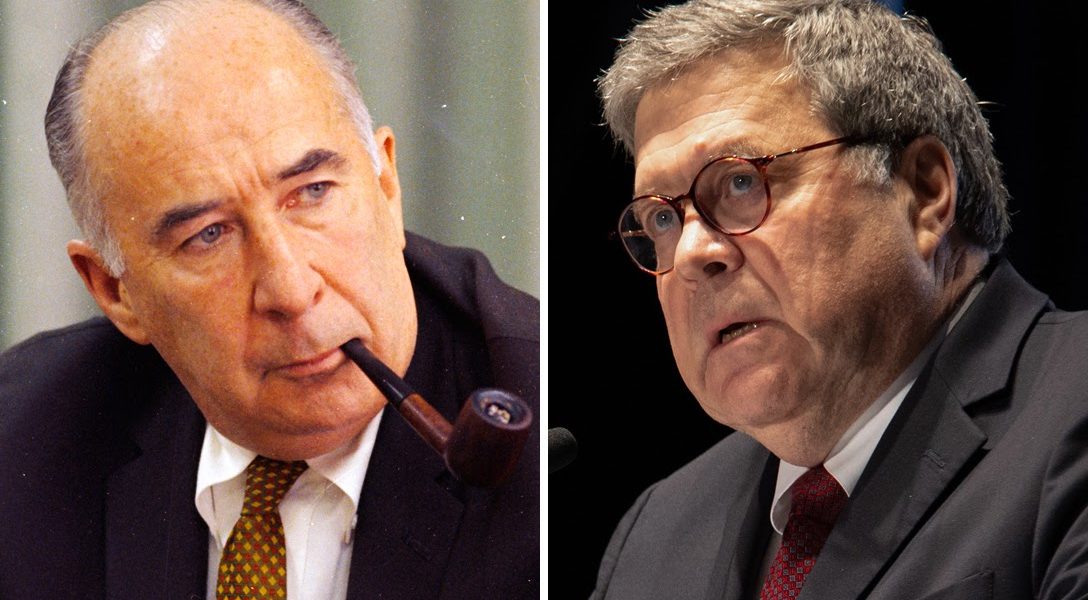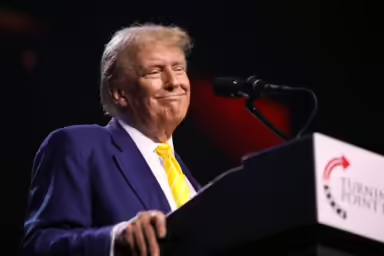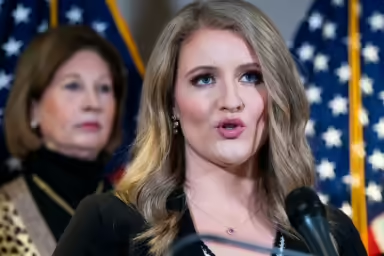The Hall of Shame for attorneys general is getting a new member, who almost daily conquers new heights in the art of dissembling.
— OPINION —
With each day in office, Attorney General William Barr invites invidious comparisons with one of his shamed predecessors — Richard Nixon’s attorney general, John Mitchell, the first to hold the office to be convicted and sent to prison.
It took Mitchell more than three years in office, a criminal conviction, and prison sentence for obstruction of justice, perjury, and false statements to build his record as history’s most shamed attorney general.
Barr has managed to rack up his dubious accomplishments in less than two years, and given President Trump’s downward trajectory in the polls and desperate attempts to remain in power, he has plenty of time to equal Mitchell, perhaps even with prison time of his own.
As Donald Ayer, Barr’s colleague in the Justice Department of President George H.W. Bush, told the House Judiciary Committee on June 24: “I believe that Attorney General Barr is a major threat to our legal system and public trust in it. That is because he does not believe in its central tenet — that no person is above the law.”
That Barr, who pledged in his nomination process to keep the Justice Department above politics, is now frequently mentioned in the same breath as Mitchell is damning. With his ham-handed removal of the US attorney in Manhattan, we thought it time to do a side-by-side comparison of the two attorneys general and their reputations for politicizing the office, criminalizing dissent, and doing anything to serve their bosses.
Mitchell
Mitchell’s three years as attorney general, which came after he ran Nixon’s campaign for president in 1968, were filled with anti-war protests, civil rights disputes, national security crises, and finally a political scandal — Watergate.
He was so devoted to Nixon, he spent his tenure as attorney general doing the president’s dirty work and serving Nixon’s worst instincts. The laconic, pipe-smoking bond lawyer was no flamboyant litigator, but a patient, well-connected and ruthless insider who worked best behind the scenes. His victims often never knew who had wielded the weapon that did them in. That work started even before Nixon was elected in 1968.
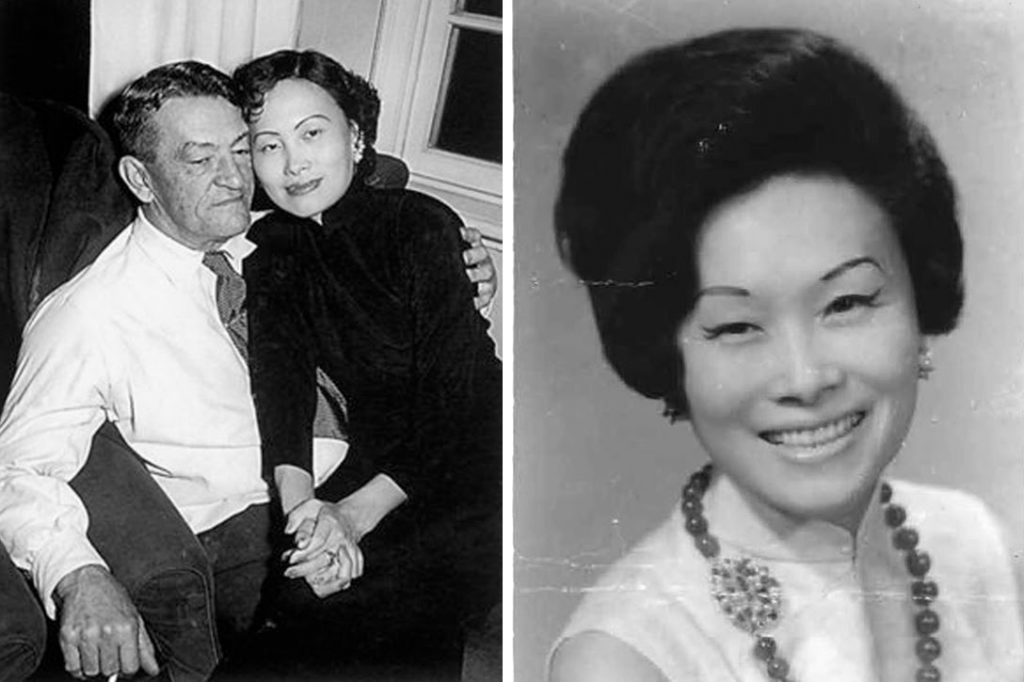
Chennault affair: In October 1968, President Lyndon Johnson hoped to end the Vietnam War through peace talks in Paris with the North Vietnamese government. Johnson agreed to end the bombing of North Vietnam if the North Vietnamese would allow representatives of the US-backed South Vietnamese government to participate in the talks.
Nixon and Mitchell feared a halt to the bombing, combined with the South Vietnamese representatives’ appearance in Paris, would give a political boost to Nixon’s opponent — Democratic Vice President Hubert Humphrey. So they sabotaged the talks, working through Anna Chennault, the China-born wife of World War II hero Gen. Claire Chennault, to persuade the South Vietnamese not to show up in Paris.
Mitchell was the conduit to Chennault, who was wiretapped and followed by the FBI. The South Vietnamese declined to go to Paris; the Johnson initiative failed; Nixon won the election and rewarded Mitchell with the attorney general post.
FBI wiretaps: Nixon’s foreign policy agenda depended on secrecy. Mitchell was his enforcer. In May 1969, the revelation in the New York Times that the United States was secretly bombing targets in Cambodia, then a neutral country, led Nixon to order wiretaps on 17 government officials and journalists.
FBI Director J. Edgar Hoover agreed to conduct the wiretaps, but he demanded Mitchell sign off on each tap. Mitchell signed the approvals and then spent the rest of his tenure in denial of what he had done. The wiretaps were ostensibly to find the leakers of government secrets, but they represented enough of a violation of civil liberties that they were eventually included in the articles of impeachment against Nixon approved by the House Judiciary Committee in 1974.
Failed Supreme Court picks: Mitchell tried to bolster Nixon’s “Southern Strategy” of pitching Republican law and order policies to Southern voters who had traditionally voted for Democrats by helping select two Southern candidates to fill Supreme Court seats previously held by Democratic appointees. But the Democrat-controlled Senate rejected both Clement Haynsworth of South Carolina and G. Harrold Carswell of Florida.
Both nominees were rejected because of concerns about their civil rights records, particularly Carswell, who had made a variety of racist statements while a candidate for office in Georgia. Mitchell said he would not criticize Carswell for statements made more than 20 years earlier.
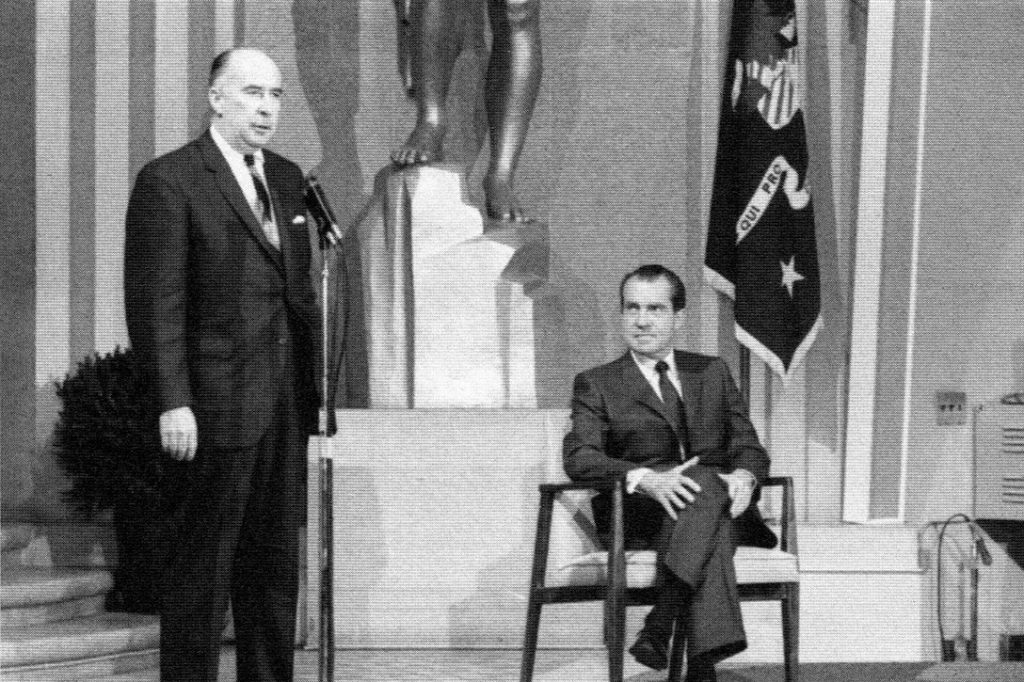
Student protests: In May 1971, Mitchell engineered the arrests of hundreds of anti-war demonstrators who gathered in Washington for another in the series of protests against the Nixon administration’s Vietnam War policy. Justice Department official William Rehnquist, a future Supreme Court justice, called the administration’s moves the imposition of “qualified martial law.” Military helicopters ferried in soldiers from the 82nd Airborne Division to stop the demonstrators, who were captured and confined in pens in the city’s RFK Stadium.
The moves, Mitchell said, “will set an example for other communities.” (It also inspired Barr, as another group of protesters would learn earlier this month.)
Pentagon Papers: In keeping with his role as Nixon’s secrets keeper, Mitchell worked with Nixon to stop the New York Times from continuing to publish the Pentagon Papers, the official history of the Vietnam War authorized by former Defense Secretary Robert McNamara. Mitchell sued the Times in federal court and told Nixon that US District Judge Murray Gurfein could rule in their favor in appreciation for Nixon having appointed Gurfein to the court.
Gurfein ruled against the administration, which later lost its attempt to stop the Times, the Washington Post, and other papers in the Supreme Court.
Nixon reacted to the Pentagon Papers publication, which threatened to expose his interference in the Paris Peace Talks, by creating a special investigations unit in the White House, which became known as the Plumbers.
Military spy ring: Nixon believed his national security policies required great secrecy to implement, but that triggered so much suspicion that Pentagon leaders began pilfering documents from the White House in order to learn what was actually being planned by the president. This spy ring was eventually discovered in December 1971 after classified information from White House documents was revealed in columns written by Jack Anderson in the Washington Post.
An internal investigation by the Plumbers revealed that Admiral Thomas Moorer, the chairman of the Joint Chiefs of Staff, was the ultimate recipient of the secrets. Nixon wanted at first to fire him, but Mitchell urged against it, arguing that Nixon would now have leverage over Moorer. Mitchell agreed to deliver a secret message to Moorer, advising him that his role in the spying had been discovered and that he had to comply with Nixon’s every wish.
Nixon went to extreme lengths to cover up the existence of the spy ring, which had been enabled by Gen. Alexander Haig, his future chief of staff. His cover-up of the spy ring was one of the reasons Nixon tried to conceal his administration’s role in the failed Watergate burglary, which involved some of the same people involved in the spy ring investigation.
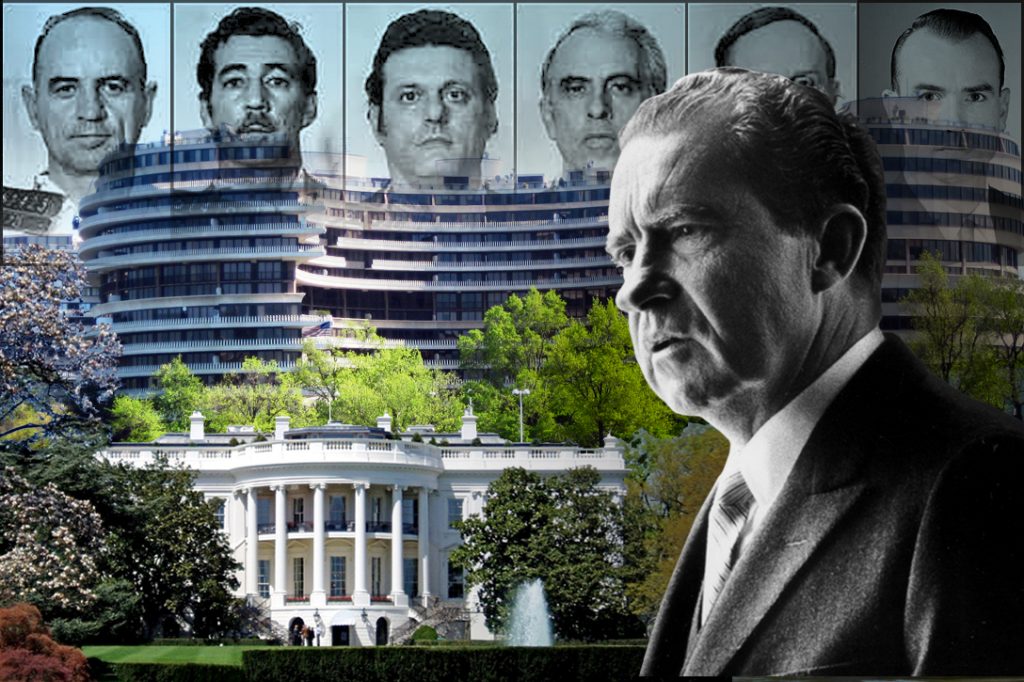
Watergate: Mitchell agreed to reprise his role as Nixon’s campaign manager for the 1972 campaign. He agreed to support a political intelligence-gathering team led by former CIA operative E. Howard Hunt and G. Gordon Liddy, a former FBI agent, who had also been part of the secret White House Plumbers investigative team.
It has never been proved that Mitchell had any advance knowledge of the Watergate break-in that failed on June 17, 1972, but he ran Nixon’s campaign and bore much responsibility for what happened inside it. He resigned as campaign manager on July 1, 1972, saying he wanted to spend more time with his wife and daughter, but he could not escape the growing scandal following the break-in. When the scandal’s true magnitude emerged, it dragged Mitchell and his skullduggery from the shadows.
Mitchell was indicted on March 1, 1974, on multiple counts of conspiracy, obstruction of justice, false statements to the FBI, false statements to the grand jury, and perjury, and in early 1975, he became the first attorney general to be convicted and sentenced to prison. He was released in 1979 and died on November 8, 1988, after suffering a heart attack and collapsing on a Washington street.
By the time he died, Mitchell had traded his early reputation as one of the nation’s most gifted bond attorneys for that of Nixon’s most calculating enablers — someone who made the expression of the president’s most sinister and divisive instincts possible. While other attorneys general who followed him have been mired in controversy, none had been so thoroughly tied to Mitchell’s level of political scandal until William Barr and his work on behalf of President Donald Trump.
Barr
Baggy and rumpled, Barr looks as if he too would work best behind the scenes, but he often gleefully seeks the spotlight to issue his lies. That’s odd, given Barr’s early work in the intelligence community: he worked for the CIA while in law school at George Washington University.
He progressed through the intelligence community to the Justice Department in the George H.W. Bush administration, where he was head of the Office of Legal Counsel. In 1991, after incumbent Richard Thornburgh left for an unsuccessful Senate campaign, Barr was nominated to be attorney general. He was confirmed unanimously. He was 41 years old.
Pardon for defense secretary: During the final years of the Bush administration, Barr provided hints of what he would do in the future. He urged Bush to issue pardons to former Defense Secretary Caspar Weinberger, who had been indicted for his role in providing illegal aid to the Contra rebels fighting Nicaragua’s democratically elected government in the 1980s. That pardon blocked a trial that could have exposed Bush’s own role in aiding the Contras, which had been the subject of controversy during the 1980s and 1990s.
Fast forward to the Trump administration. After Trump fired his first attorney general, Jeff Sessions, he turned to Barr, who had written a memo to the Justice Department critical of the special counsel investigation of possible collusion between the 2016 Trump campaign and the Russian government.
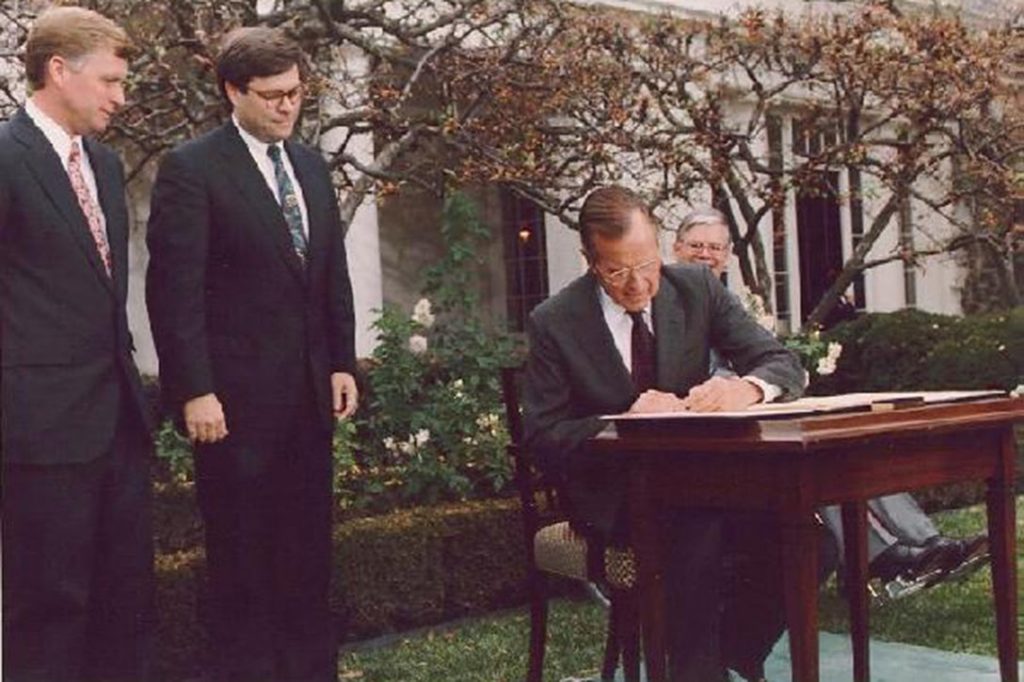
Since becoming attorney general in 2019, Barr has consistently run political interference for Trump and used the Justice Department to settle scores for the president and obstruct cases against Trump allies. To his growing legion of critics, he has used the Justice Department as Trump’s personal law firm.
The Mueller investigation: Former FBI Director Robert Mueller was appointed in May 2017 to serve as special counsel investigating possible connections between the Trump campaign and the Russian government. Mueller’s team worked for almost two years investigating the case and delivered its report to Barr, who was freshly sworn in as attorney general, in March 2019. In a letter to Congress, Barr said Mueller’s “investigation did not find that the Trump campaign or anyone associated with it conspired or coordinated with Russia in its efforts to influence the 2016 US presidential election.”
That claim, however, was incorrect. Mueller wrote Barr complaining that he had mischaracterized his report, and Mueller testified later that his report neither implicated nor exonerated Trump of anything. Barr had jumped the gun, and his interference had created a misleading impression about the contents of Mueller’s investigation. It would not be the last time Barr would interfere.
Roger Stone: A longtime Trump associate and former dirty trickster for the 1972 Nixon campaign, Roger Stone was convicted in federal court in November 2019 of seven counts of obstruction of justice, making false statements to investigators, and witness tampering in relation to the Mueller investigation.
Career prosecutors recommended a seven-to-nine-year sentence for Stone, but higher-level Justice officials pressured by Barr submitted a revised sentencing recommendation. US District Judge Amy Berman Jackson sentenced Stone to 40 months in prison, a sentence he has yet to serve.
On June 24, career prosecutor Aaron Zelinsky told the House Judiciary Committee that Stone received favorable treatment because he was a friend of Trump and that higher-level Justice officials exerted pressure on career prosecutors to benefit Stone.
The Flynn case: Michael Flynn, a retired three-star general and former head of the Defense Intelligence Agency, was Trump’s first national security adviser. He resigned in February 2017 after it was revealed he lied to FBI agents about his contacts with the Russian ambassador concerning sanctions placed on Russia during the final days of the Obama administration.
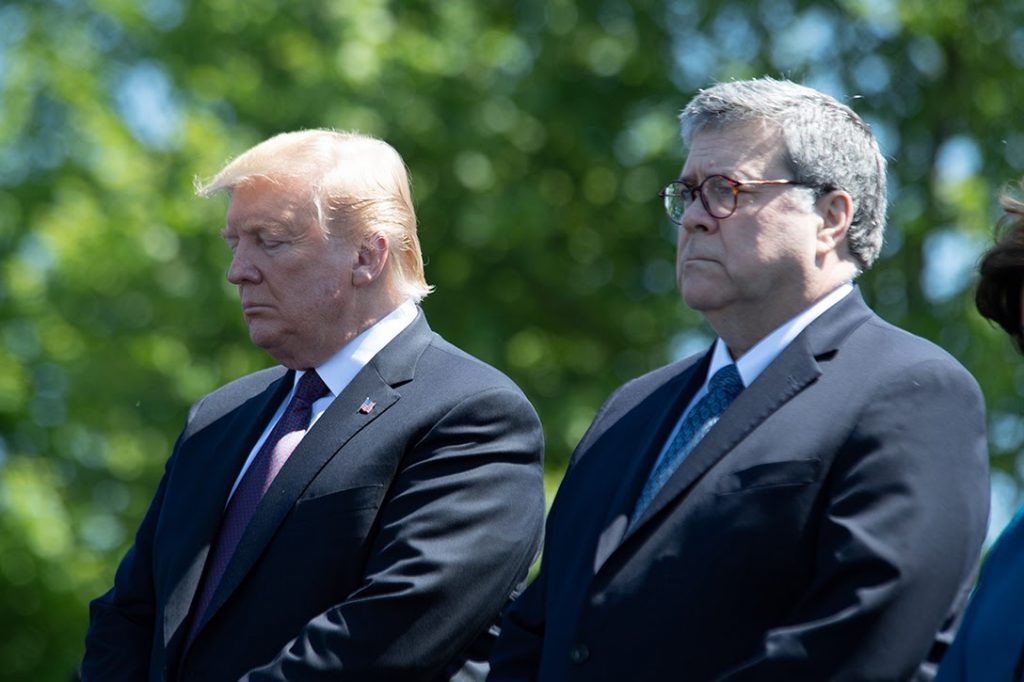
Flynn pleaded guilty twice — in December 2017 and December 2018 — to lying to FBI agents about the call with the Russian ambassador. In January 2020, however, he abruptly changed his plea to innocent.
Then the Justice Department, at Barr’s behest, made the bizarre motion that it was dropping its case against Flynn, because it didn’t believe it could prove it in court. This was after Flynn had already pleaded guilty twice.
US District Judge Emmet Sullivan, who was overseeing the case, refused to accept Justice’s motion and assigned another judge to provide his opinion on his ruling. On June 24, a federal appeals court let Barr get away with it, ruling that Sullivan couldn’t stop the Justice Department’s move to drop the case.
Clearing Lafayette Park: The May 25 killing of George Floyd, a 46-year-old African American, outside a convenience store by Minneapolis police, triggered a series of protests around the United States, including in Lafayette Park across from the White House.
On June 1, a combination of law enforcement officers and National Guard troops used tear gas, pepper spray, and other crowd-control devices to clear the park so Trump could walk across, stand outside St. John’s Episcopal Church, and hold up a Bible for a photo op.
The violent ouster of the protesters was visible around the world on television as well as through the thousands of cell phone videos shot by the protesters and surrounding crowds. People in the park picked up the tear and pepper gas canisters fired at them by the police, who at first denied they used them, only to admit later that they had.
Barr controlled the park clearing and later appeared on CBS’s Face the Nation to say the demonstrators were not peaceful, that tear gas was not used, and that the entire outing was not a photo op. “No, there were not chemical irritants. Pepper spray is not a chemical irritant,” Barr said. “It’s not chemical.”
“It is also the job of government officials to tell the public the truth,” the Washington Post said in a fact-checking article of Barr’s claims. “In this case, it’s hard to believe that Barr is meeting that standard.”
Firing the US attorney in New York: Late on the night of Friday, June 19, the Justice Department announced that Geoffrey Berman, the US attorney for the Southern District of New York, was resigning and would be replaced by Jay Clayton, the chairman of the Securities and Exchange Commission.
Berman’s office is in the middle of investigating cases against Rudy Giuliani, Trump’s personal attorney, and other Trump associates.
Serving in Berman’s place on an interim basis, Barr said, would be Craig Carpenito, the US attorney in New Jersey. That was also a change from normal procedures, which call for the attorney’s deputy to serve in the interim.
All this was news to Berman, who said he wasn’t resigning. The next day, Barr released a statement saying that Berman had been fired on the orders of Trump. Berman continued to resist until Barr said that Berman would be replaced temporarily, not by Carpenito but by Audrey Strauss, Berman’s deputy.
For his part, Carpenito weighed in and said he had no idea that Berman had not resigned but was actually being fired. In other words, Barr had lied again.
In the ensuing days, more calls for Barr’s impeachment or resignation have erupted and the New York City Bar has deemed him unfit. But a committee of one, President Trump, has decided that Barr remains the right man for the job.
Ray Locker is a journalist and author living in Washington, D.C. He is the author of Nixon’s Gamble: How A President’s Own Secret Government Destroyed his Administration and Haig’s Coup: How Richard Nixon’s Closest Aide Forced Him from Office.
Related front page panorama photo credit: Adapted by WhoWhatWhy from DOJ and DOJ / Wikimedia.
